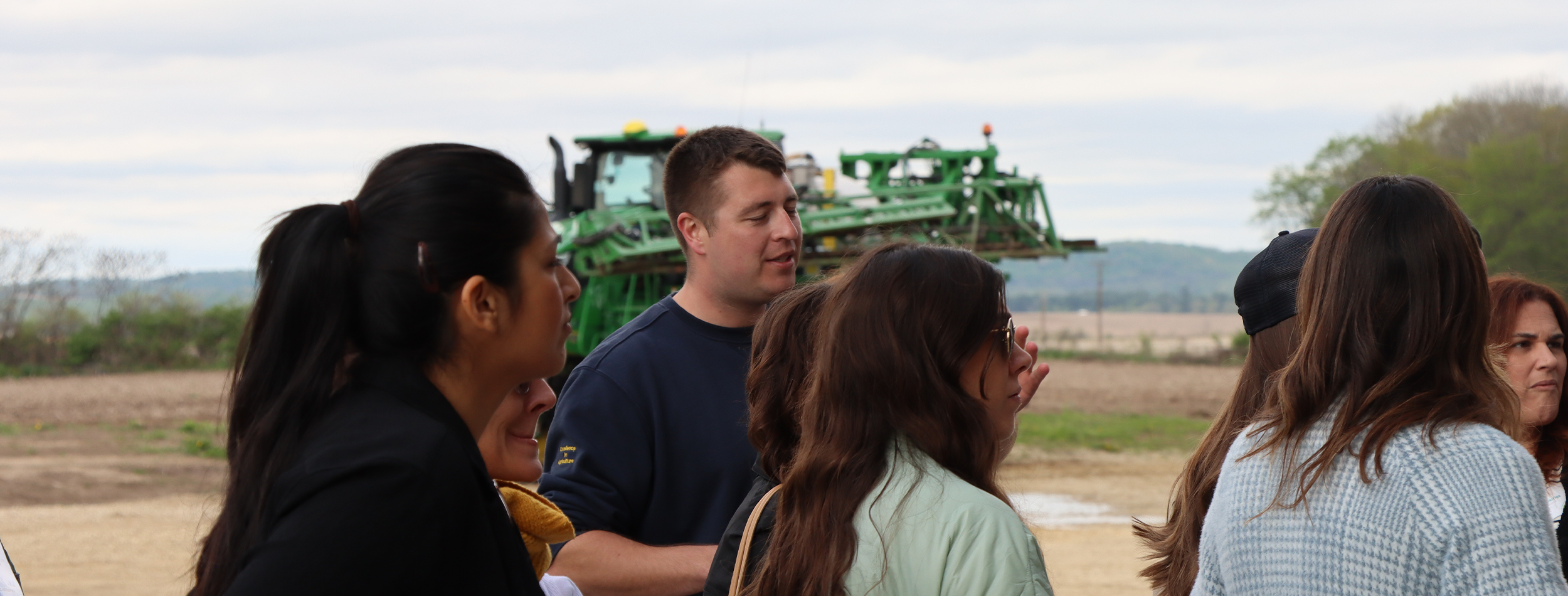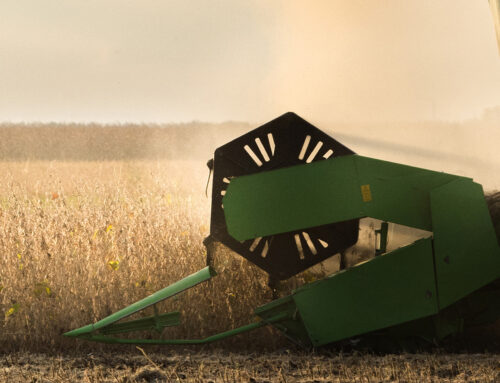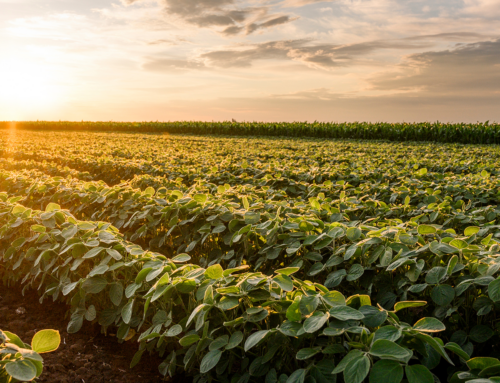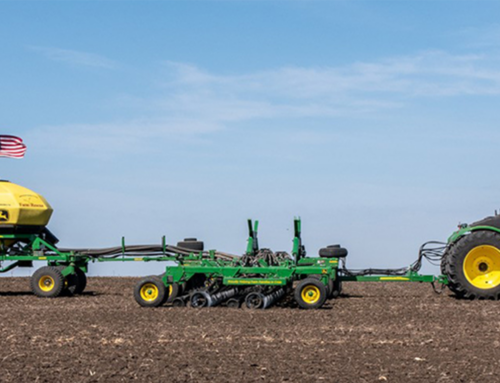
Eau Galle grower shows sustainable practices during farm tour
Share This
Farmers were sustainable long before sustainability was a cultural buzzword.
In a world where adopting environmentally friendly practices and utilizing eco-friendly products is becoming increasingly urgent, farmers – especially U.S. soybean farmers – are leading the charge.
“U.S. soy can help organizations increase and meet sustainability goals,” said Tony Mellenthin, who represents Wisconsin on the United Soybean Board (USB). “On our farm, it’s important first and foremost to be a good steward of the environment. Many farmers think in terms of generations, and we want to make sure that our farm is around for future generations, if they choose to farm. But it’s also important because it’s the right thing to do.”
On May 9, attendees of the Sustainable Brands Brand-Led Culture Change conference in Minneapolis, which USB sponsored, witnessed firsthand the myriad ways that U.S. soybean farmers are sustainable when they visited Mellenthin’s farm in Eau Galle.
“We were able to talk to these individuals, who were from across the nation representing organizations that are interested in increasing their sustainability, about farming and the different sustainable practices we implement,” Mellenthin said. “We explained why we do what we do and why we don’t do what we don’t do.”
Companies across the country are eager to reduce their environmental footprint – U.S. soy can be the answer they’re looking for. Soy can not only replace harmful ingredients in hundreds of products, but it’s grown using sustainable practices. According to the 2023 U.S. Soy Sustainability Overview, U.S. soybean farmers have realized a 48 percent land use efficiency improvement, 43 percent greenhouse gas emissions efficiency improvement and 34 percent per acre soil conservation improvement.
“This is enlightening,” said attendee Annie Cooper, senior director of key accounts at Vanguard Renewables. “It’s wonderful to hear a farmer talk about their day-to-day experience and see the amazing equipment and land that he has to work with to do what he does. And to see the strong pride that comes with that has been really great.”
During the tour, guests looked on as the field next door, which was minimally tilled, was planted with corn. Across Mellenthin’s acres, no till and minimal tillage are implemented, reducing soil erosion, keeping nutrients in the soil and saving money on fuel costs. Mellenthin highlighted additional advantages of minimal tillage to the group.
“We minimal till for a couple of reasons – we incorporate some fertilizer, create a seed bed and kill any weeds that are emerging without using herbicides,” Mellenthin said. “We call it responsible tillage. We’re not just going out with the plow, setting it deep and tearing it up. There’s a reason why we do what we do.”
Planting cover crops, which improves soil fertility and protects from erosion, is another avenue soybean growers take to make their operations more sustainable.
“We planted between 600 and 700 acres of soybeans into a green rye cover crop this year,” Mellenthin said. “To go out into rye that is knee high and green and plant soybeans that still have full potential is something that 10 years ago you would’ve gotten a lot of crazy looks for, but now you only get a few crazy looks.”
Unsurprisingly, technological advancements have also improved sustainability practices on farms across the nation, including Mellenthin’s farm. These practices – like GPS, satellite imagery and guidance control – allow soybean growers to produce more soybeans on the same amount of land.
“Today’s technology really makes a difference,” Mellenthin said. “It saves you fuel, fertilizer and chemicals. You’re saving not only costs, but time as well by eliminating overlap.”
At times, it may feel like corporate America is far removed from rural America. But the two are as interconnected as ever.
“It’s so important to see these sustainable practices firsthand because we as Americans need to really understand where our food is coming from, and as businesspeople we need to understand where our products are coming from,” Cooper said. “Then, we can help generate solutions that can benefit farmers because without farmers we aren’t going to have any food, so we want to make sure we are making decisions that are helpful to them.”
Sustainable farming practices look different from farm to farm, and even from field to field.
“Sustainability on the farm is not one-size-fits-all,” Mellenthin said. “I say it’s like going to the doctor – you want the doctor to treat you in what you need, not what they do to treat all of their patients.
The world is going green. Yet soybean growers are already there – and not afraid to continue their sustainability efforts.



